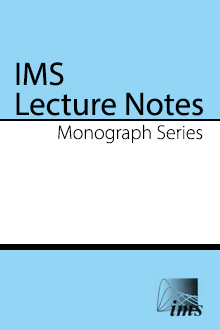Abstract
The Burton-Keane theorem for the almost-sure uniqueness of infinite clusters is a landmark of stochastic geometry. Let $\mu$ be a translation-invariant probability measure with the finite-energy property on the edge-set of a $d$-dimensional lattice. The theorem states that the number $I$ of infinite components satisfies $\mu(I\in\{0,1\}) = 1$. The proof is an elegant and minimalist combination of zero-one arguments in the presence of amenability. The method may be extended (not without difficulty) to other problems including rigidity and entanglement percolation, as well as to the Gibbs theory of random-cluster measures, and to the central limit theorem for random walks in random reflecting labyrinths. It is a key assumption on the underlying graph that the boundary/volume ratio tends to zero for large boxes, and the picture for non-amenable graphs is quite different.
Information
Digital Object Identifier: 10.1214/074921706000000040


